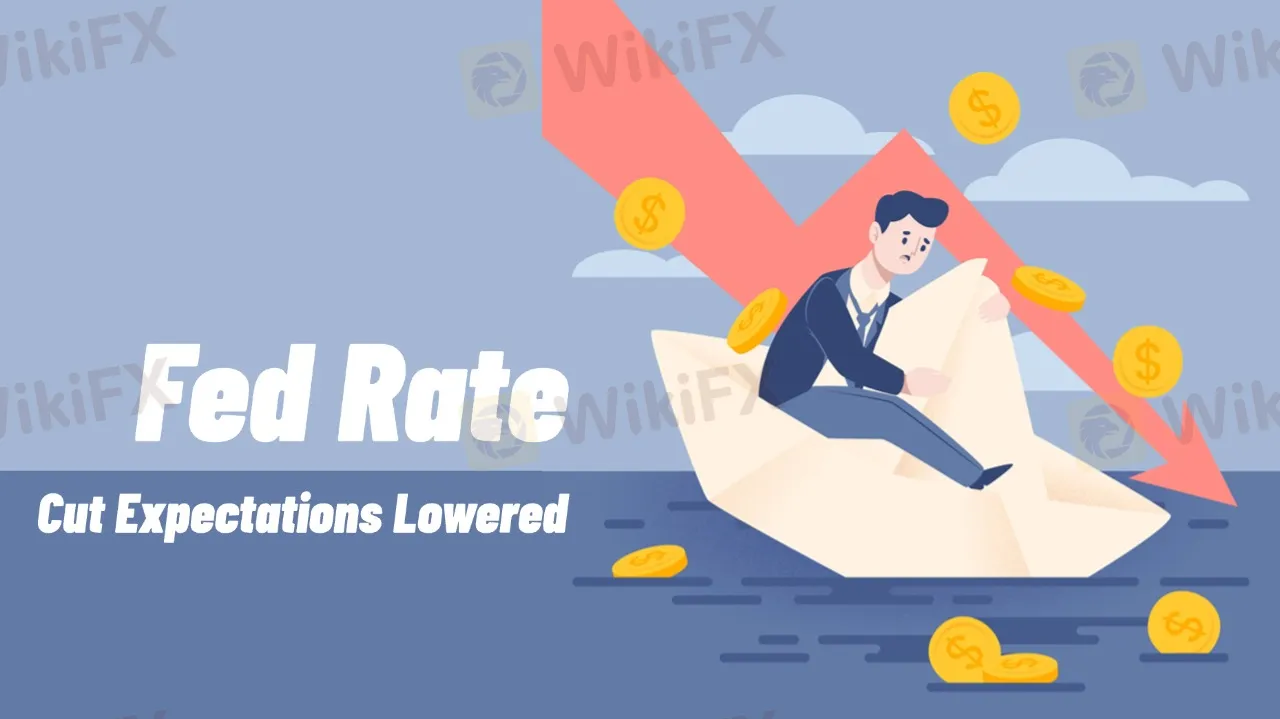简体中文
繁體中文
English
Pусский
日本語
ภาษาไทย
Tiếng Việt
Bahasa Indonesia
Español
हिन्दी
Filippiiniläinen
Français
Deutsch
Português
Türkçe
한국어
العربية
Fed Rate Cut Expectations Lowered
Abstract:Federal Reserve officials have adjusted their rate cut expectations, now anticipating only one rate cut this year instead of the previously expected two.

Persistent inflationary pressures have led to a more cautious policy stance, drawing market attention to its potential impact.
Recently, Federal Reserve officials have signaled a more conservative approach, emphasizing the uncertainty surrounding the disinflation process. Atlanta Fed President Raphael Bostic stated that, considering inflation volatility, he has revised his rate cut forecast from two to one this year.
He pointed out that maintaining stability is preferable to making premature cuts and then having to reverse course, reducing the risk of policy missteps. Additionally, he now expects inflation to return to the 2% target by early 2027, later than previously projected.
The slower-than-expected decline in inflation has made the Fed more cautious in adjusting its policies. Bostic believes that inflation remains at risk of rising, particularly due to external factors that could push prices higher.
Furthermore, the U.S. economic growth rate is expected to slow, leading Bostic to lower his GDP growth forecast for this year to 1.8%, down from the previous 2.1%. The unemployment rate is projected to be between 4.2% and 4.3%, an increase but still within a relatively stable range. Given this economic backdrop, the Fed is taking a more restrained approach to rate cuts to prevent premature policy easing from undermining its inflation control efforts.
How Will the Market React?
The adjustment in rate cut expectations poses challenges to market sentiment, prompting investors to reassess the impact of the interest rate environment on asset prices. While the market had anticipated a more accommodative Fed policy, it must now contend with the possibility of higher interest rates persisting for an extended period.
Moving forward, market trends will depend on inflation data and further signals from the Federal Reserve. Investors should closely monitor economic indicators and adjust their strategies accordingly to navigate potential market fluctuations.

Disclaimer:
The views in this article only represent the author's personal views, and do not constitute investment advice on this platform. This platform does not guarantee the accuracy, completeness and timeliness of the information in the article, and will not be liable for any loss caused by the use of or reliance on the information in the article.
Read more

Malaysian Finfluencers Could Face RM10 Million Fine or 10 Years in Prison!
A new regulatory measure by the Securities Commission Malaysia (SC) is set to change the country’s online trading and financial influencer landscape. Starting 1 November 2025, any trader or influencer caught promoting an unlicensed broker could face a fine of up to RM10 million, a prison sentence of up to 10 years, or both.

Juno Markets: A Closer Look at Its Licenses
When selecting a broker, understanding its regulatory standing is an important part of assessing overall reliability. For traders seeking to protect their capital, ensuring that a platform operates under recognised and stringent oversight can make all the difference. Keep reading to learn more about Juno Markets and its licenses.

Complaints Against Weltrade | Traders Can’t Get Their Money Back
Opening a trading account and watching your capital grow can feel exciting and full of promise until the moment you realise you cannot get your money back. That’s when the dream turns into a nightmare. Recent complaints submitted to WikiFX reveal an unsettling pattern seen at Weltrade where deposits vanish, withdrawals stall for days or even months, and support channels lead nowhere.

WikiFX Community Event Series, “Thailand Elites’ View”
WikiFX launched the “Thailand Elites’ View” event in its official community, featuring heavyweight guests from the Elites Club who shared their insights on the current state of Thailand’s forex market, compliance trends, and the building of investor confidence.
WikiFX Broker
Latest News
What Is Indices in Forex? A Beginner’s Guide to Trading Forex Indices
FBI Issues Urgent Warning on Crypto Recovery Scams
Robinhood Moves Toward MENA Expansion with Dubai DFSA License Application
How to Use Retracement in Trading
CySEC warns the public against 17 investment websites
Fake Trader Faces 20 Years & RM9 Million Fine for RM1.45 Mil Derivatives Scam
Complaints Against Weltrade | Traders Can’t Get Their Money Back
WikiFX Community Event Series, “Thailand Elites’ View”
Juno Markets: A Closer Look at Its Licenses
Germany's Industrial Core Is Collapsing Under The US Trade Deal And The Green Agenda
Currency Calculator


